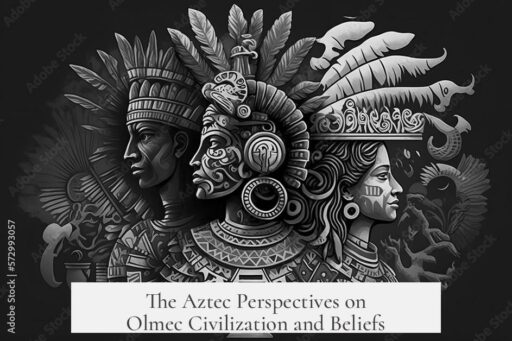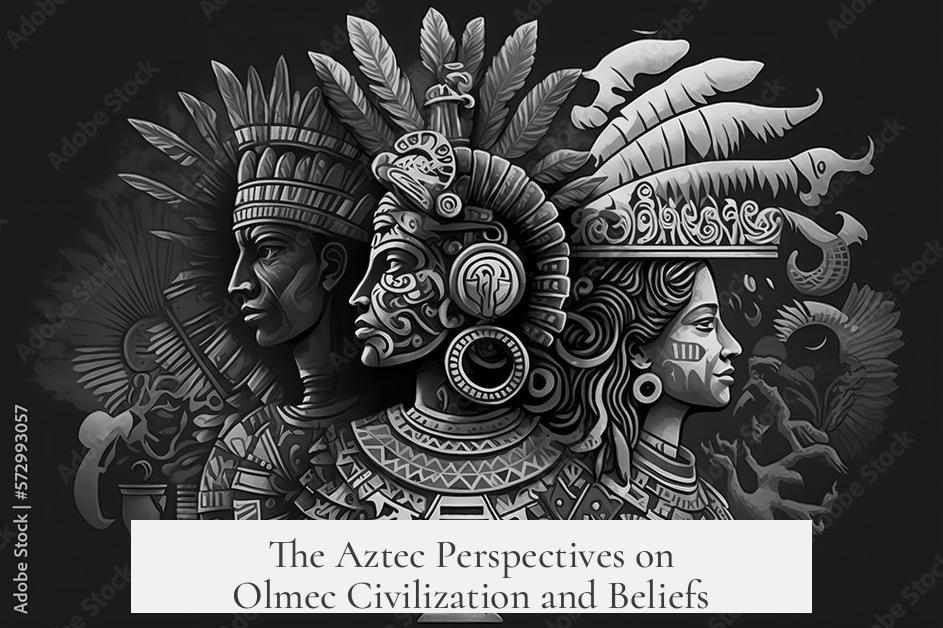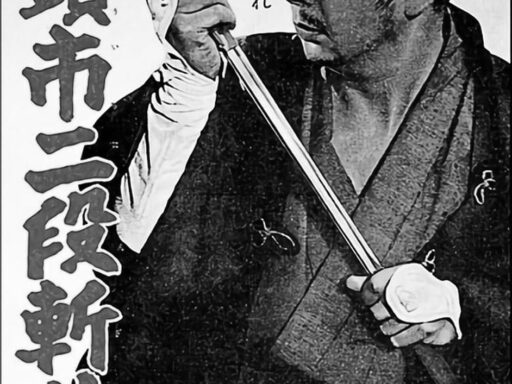The Aztecs held little to no concrete knowledge or beliefs about the Olmecs as a distinct or historical people. The Olmecs, who flourished along the Gulf Coast centuries before the Aztecs rose to power, were largely unknown or forgotten by Aztec society. This lack of recognition stems from multiple factors including linguistic disconnects, geographic divisions, and cultural shifts.
The term “Olmec” itself originates from the Nahuatl language spoken by the Aztecs, derived from olli, meaning “rubber.” The word Olmecan translates as “people from the land of rubber,” highlighting how the Aztecs associated the Olmec region primarily with rubber production. This name, however, is an archaeological and linguistic construction that emerged long after the Olmec civilization had declined.
During the Olmec period (roughly 1400–400 BCE), the language spoken in their heartland is uncertain. Some scholars propose that the Olmecs spoke a Mixe-Zoquean language, but this hypothesis remains debated. The Aztecs, speakers of Nahuatl, likely had no direct linguistic or cultural connection to the Olmec language or traditions.
Geographically, the Olmec core region lay along the tropical Gulf Coast, below the Isthmus of Tehuantepec—a major cultural and ecological divide. The Aztecs, based in the highland territories of central Mexico, generally focused their empire’s expansion toward areas like Oaxaca and Guerrero rather than the coastal lowlands. They did conquer parts of what was once Olmec territory, such as regions near the Papaloapan and Coatzacoalcos rivers, and established tributary provinces there, but this did not translate into an awareness of the region’s ancient past.
The Aztec codices refer to the area as Tochtepec, named after a major town in the territory. This province paid tribute in quantities of rubber balls, feathers, gold items, and cacao—the “land of rubber” lived up to its name. However, Tochtepec was peripheral to Aztec central interests. It was important mainly as a distant tributary province rather than a culturally significant homeland.
The Aztecs themselves were relative newcomers to the central Mexican political scene. They founded Tenochtitlan in the early 14th century CE and modeled much of their society on the earlier Toltecs, who flourished between roughly 850 and 1150 CE. Their cultural memory centered more on these ancestors and legendary predecessors like the Toltecs and the famous city of Teotihuacan. The latter was regarded as a sacred place where gods formed the world, a view extending mythic origins rather than historical understanding.
Olmec monuments, such as colossal heads and stone altars, were impressive but mostly buried and eroded in the tropical environment by Aztec times. The sites themselves resembled natural hills or unremarkable landforms to Aztec eyes, lacking the monumental stone architecture prominent in later Mesoamerican cultures like the Maya. This lack of visible ruins contributed to the Olmecs being forgotten.
Aztec traditions and narratives tend to place ancient monumental sites and civilizations in a mythic past. For example, Teotihuacan was believed to have been built by giants before human history began. The Olmecs, as a named or identified culture, do not appear directly in Aztec myth or history. Instead, some Nahuatl poems refer to a place called “Tamoanchan” on the eastern coast existing before Teotihuacan’s foundation. This may correspond to the Olmec heartland mythologically, viewed as a time before the sunrise and the current world order.
The concept of the Olmec as a distinct archaeological and cultural entity is largely a modern scholarly invention. The Aztecs, by contrast, likely perceived the Gulf Coast region simply as “Olmecan” land due to the rubber tribute. They did not distinguish the ancient Olmecs as their predecessors. Newcomer groups occupied these lands in Aztec times, and any Olmec cultural memory was lost or subsumed over centuries.
| Aspect | Aztec Perspective |
|---|---|
| Name “Olmec” | Means “land of rubber” in Nahuatl, reflects tribute goods, not cultural recognition. |
| Knowledge of Olmec Civilization | Minimal or nonexistent; no historical or mythological narratives clearly link to Olmecs. |
| Geographical Awareness | Knew of the Gulf Coast as a distant province (Tochtepec), mainly for taxation purposes. |
| Archaeological Remains | Seen as natural hills; monumental Olmec art was buried, limiting recognition. |
| Cultural Heritage | Focused on Toltec and Teotihuacan legacies; ancient Gulf Coast states placed in mythic prehistory. |
- Aztecs had no concrete knowledge of the Olmecs as an ancient civilization.
- The word “Olmec” reflected a regional identity tied to rubber production, not historical memory.
- Conquered territories in the former Olmec region were viewed as tributary provinces.
- Olmec sites lacked monumental visibility, diminishing cultural remembrance.
- Aztec mythology placed ancient cultures in a mythic time before the current world.
- The Olmec are largely a modern archaeological concept without direct Aztec awareness.
Did the Aztecs recognize the Olmecs as a distinct ancient civilization?
No, there is no clear evidence that the Aztecs knew of the Olmecs as a distinct people or civilization in historical records.
What was the Aztec connection to the Olmec region?
The Aztecs conquered parts of the former Olmec territory and collected tribute, such as rubber balls. However, this area was seen mainly as a distant source of tribute, not as a culturally significant heartland.
How did the Aztecs interpret ancient Olmec sites?
The Aztecs did not recognize Olmec monuments as human-made. Like Teotihuacan, these ancient sites were considered places of mythic or divine origin, often attributed to giants from before the current world era.
Did the Aztecs have any myths or stories related to the Olmecs?
Some Nahuatl poems mention an ancient eastern kingdom called Tamoanchan before Teotihuacan. This might hint at a mythological memory of early cultures like the Olmecs but is not concrete knowledge.
Why did the Aztecs lack detailed knowledge about the Olmecs?
The Olmecs lived long before the Aztecs and left few lasting stone structures. Their monuments were often buried or eroded, and the Aztecs focused on highland regions, limiting contact or cultural memory of the Olmecs.




